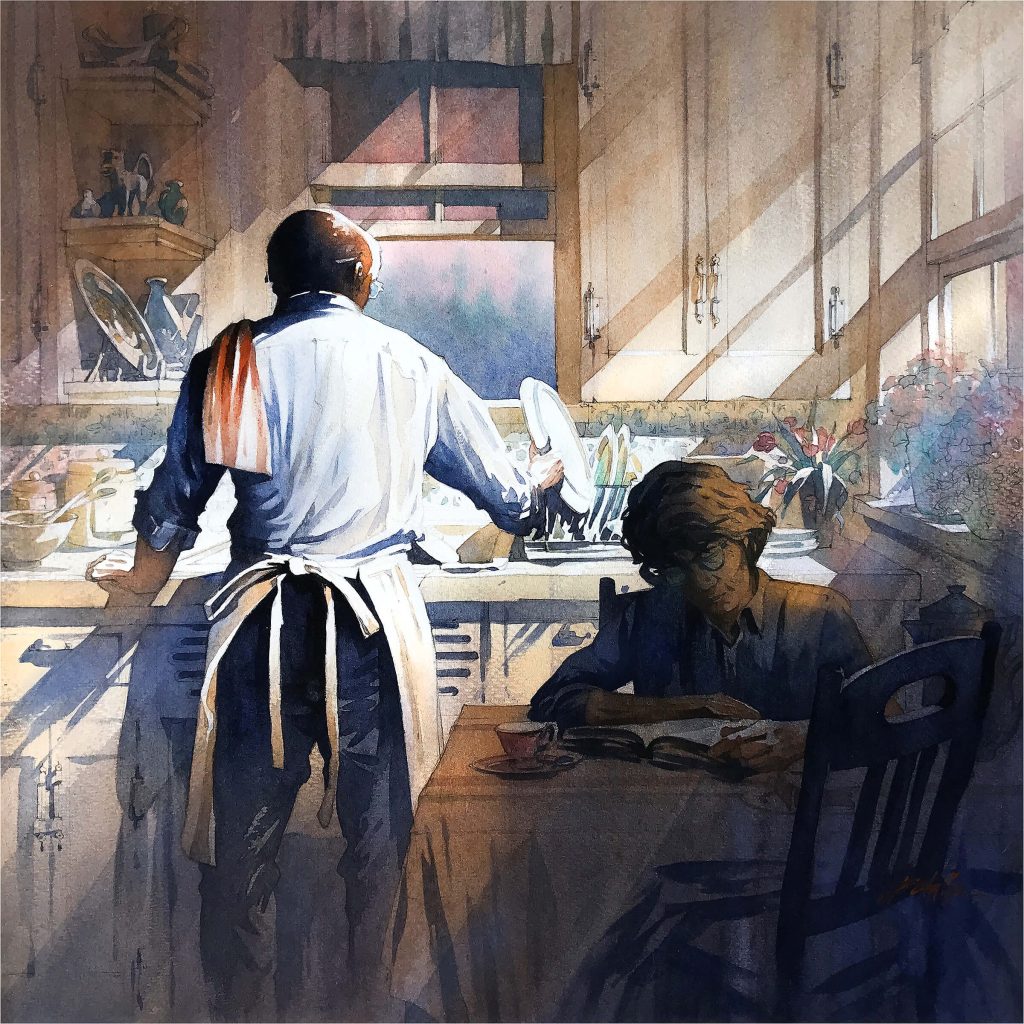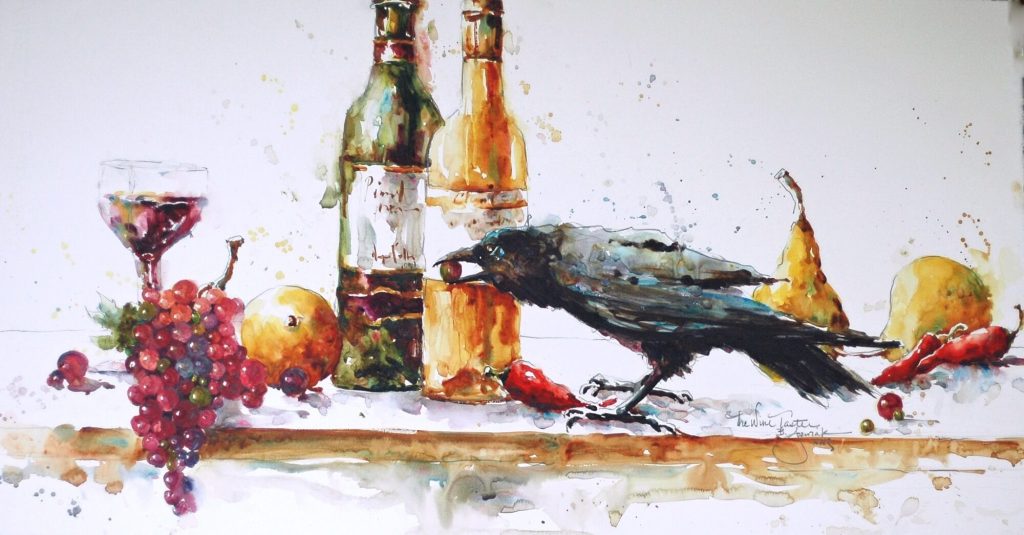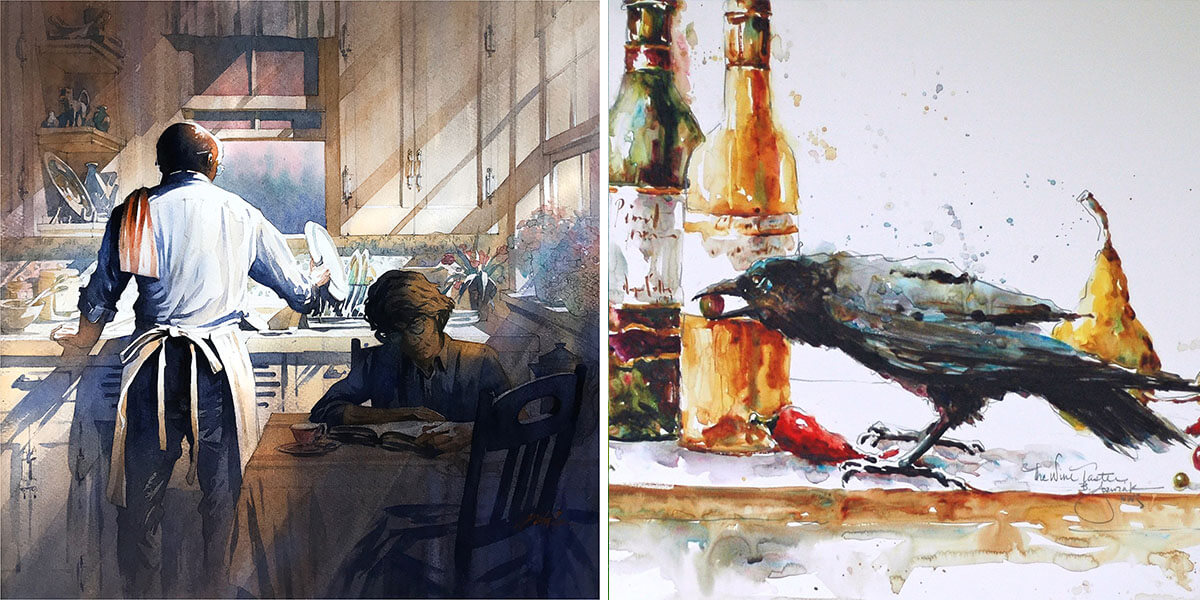The masking technique in watercolor is a method that allows artists to protect specific areas of the paper from paint, keeping them white or unpainted. Masking fluid or masking tape is applied to the areas to be preserved. Once the painting process is complete and the paint has dried, the mask is removed, revealing clean, bright sections. This technique is particularly useful for creating details such as highlights in water, reflections, and small intricate elements.
The masking technique has been in use since the early 20th century, when artists began experimenting with different materials and methods to protect paper surfaces. In watercolor, where transparency and precision are critical, masking has allowed artists greater control, enabling them to create more complex compositions.
Famous contemporary watercolorists who frequently use this technique include Thomas W. Schaller and Bev Jozwiak. Schaller, known for his architectural landscapes, uses masking to render building details and reflections with precision. Jozwiak, on the other hand, employs masking to preserve the bright areas in her portraits and animal paintings, adding vibrancy and intensity to her work.
The masking technique remains an essential tool for artists who wish to maintain clarity and brightness in their work, allowing for precise and controlled detailing.

Thomas W. Schaller
Thomas W. Schaller is known for his architectural landscapes, but he also uses masking to accurately render details not only in buildings and reflections, but also to bring vibrancy to other works, such as this one.
Bev Jozwiak
Bev Jozwiak uses masking to preserve the bright areas in her portraits and animal paintings, adding vibrancy and intensity to her creations.







